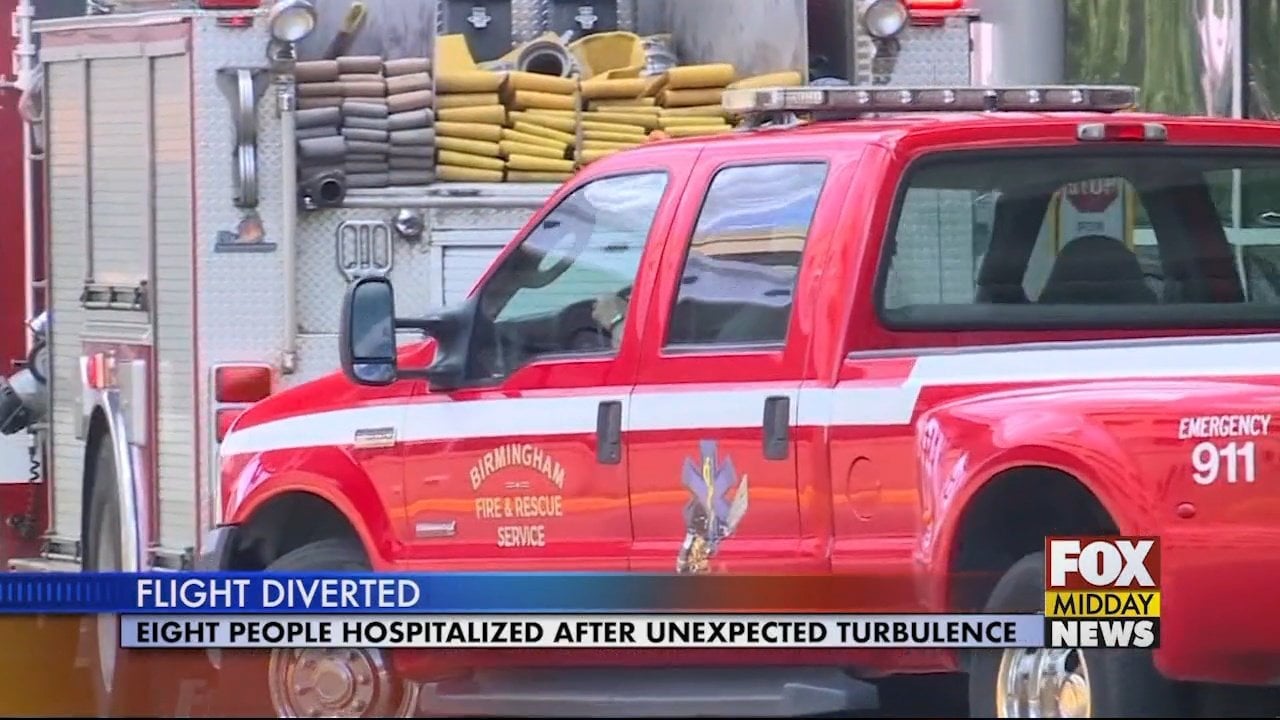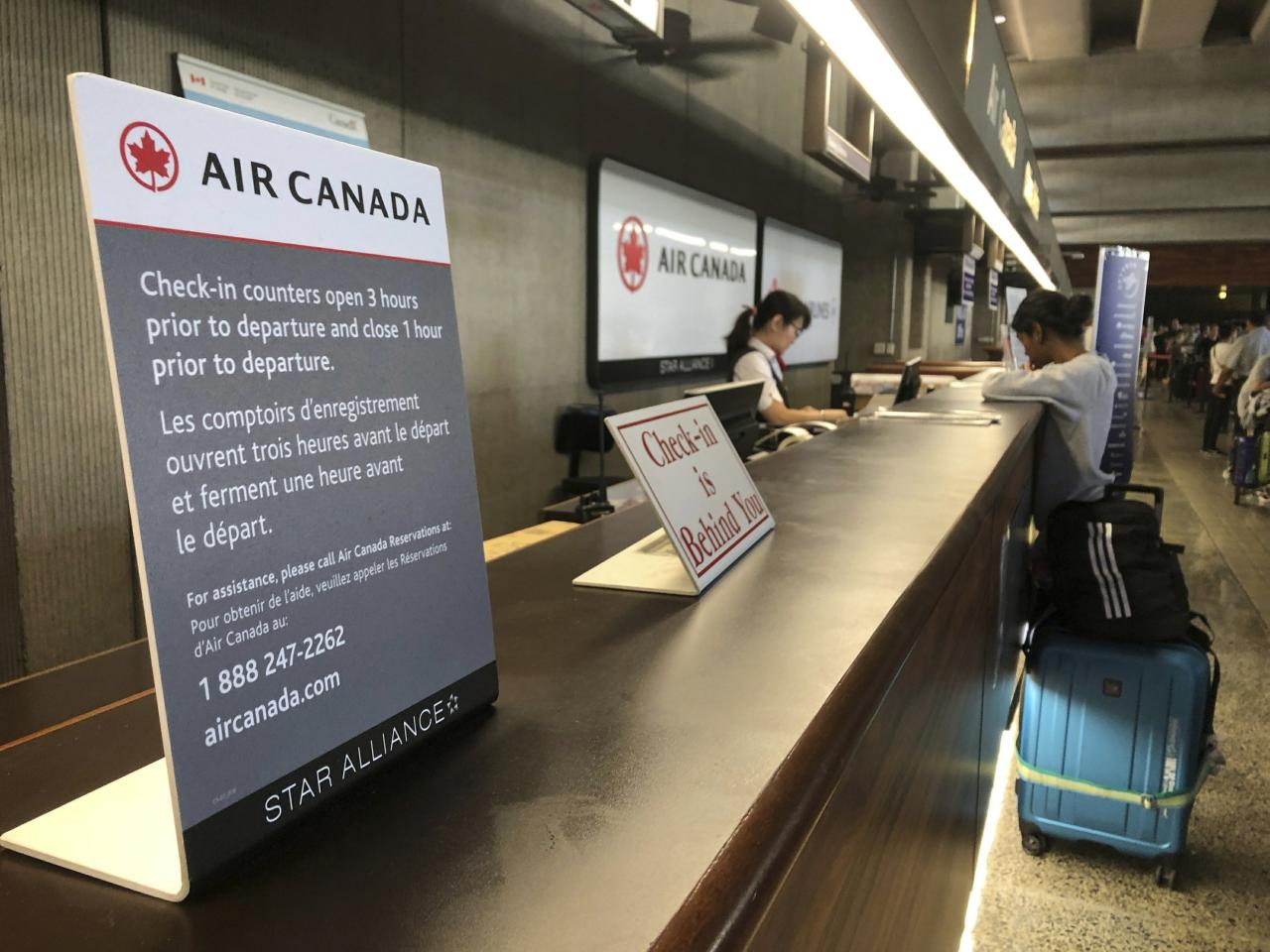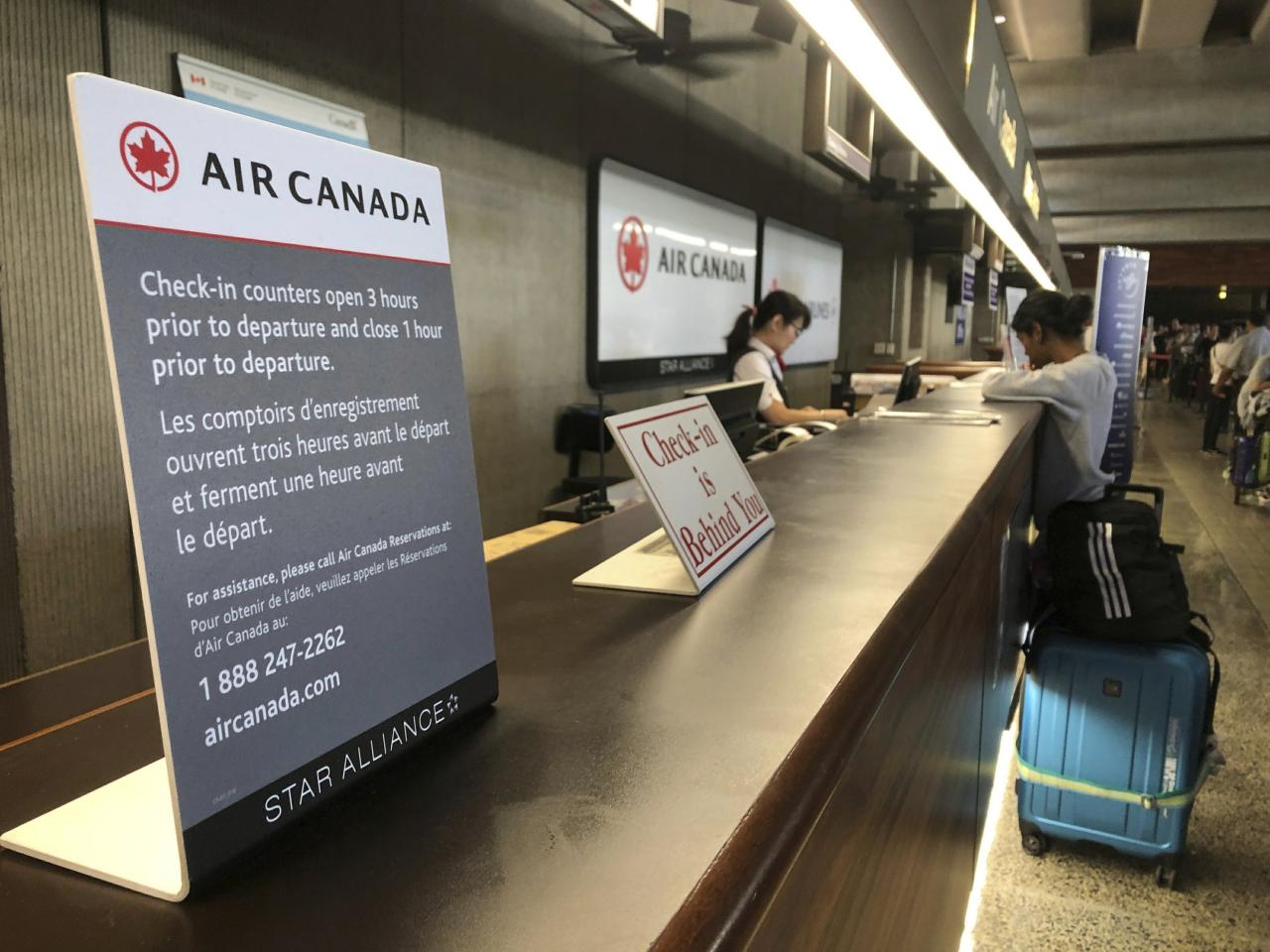Several crew members hospitalized after ‘severe’ turbulence on a flight highlights the often-overlooked dangers of air travel. While we picture smooth skies and comfortable journeys, the reality includes the unpredictable forces of nature. This article dives into the severity of turbulence, the resulting injuries, airline safety protocols, aircraft design, weather prediction limitations, passenger safety measures, post-incident investigations, and the long-term effects on those involved.
We’ll explore what causes these violent events, how airlines are working to improve safety, and what you can do to prepare yourself for unexpected turbulence.
Seriously rough flight, huh? Several crew members hospitalized after ‘severe’ turbulence on that plane – talk about a bumpy ride! It makes you appreciate the mental fortitude shown by the Celtics, check out their resilience in this game: Celtics’ Character On Display In Bounce-Back Win VS. Pacers. That kind of composure under pressure is something to admire, especially compared to the chaos of that turbulent flight.
Hopefully, everyone on the plane recovers quickly.
We’ll examine the different types of turbulence, from light chop to the extreme forces that can cause serious injuries. We’ll also look at the roles of pilots, flight attendants, and air traffic control in mitigating risk, as well as the latest advancements in aircraft technology aimed at enhancing safety. Finally, we’ll discuss the aftermath of such incidents, including investigations and the long-term support available to passengers and crew.
Severity of Turbulence and Injuries
Air turbulence, ranging from mild bumps to severe jolts, is a common yet unpredictable phenomenon in air travel. Understanding the severity of turbulence and the potential for injuries is crucial for both passengers and crew.
Levels of Turbulence and Associated Injuries
Turbulence is categorized into several levels, from light chop to extreme turbulence. Light turbulence causes minor discomfort, while moderate turbulence can make it difficult to move around the cabin. Severe turbulence can cause significant injury, with passengers and crew being thrown around the cabin. Extreme turbulence is rare but extremely dangerous, potentially causing serious injuries and structural damage to the aircraft.
Crazy news day, huh? Several crew members hospitalized after ‘severe’ turbulence on a flight – sounds terrifying! It’s a stark contrast to the sad news that broke earlier, with the passing of beloved sportscaster Greg Gumbel, as reported here: Sportscaster Greg Gumbel dies at age 80. Getting back to the flight, I hope those crew members make a full recovery.
Injuries sustained during severe turbulence range from minor bruises and cuts to serious fractures, head injuries, and internal bleeding. Flight attendants and passengers can suffer similar injuries.
Medical Interventions for Turbulence-Related Injuries
Medical interventions for turbulence-related injuries depend on the severity of the injury. Minor injuries like bruises and cuts may only require basic first aid. More serious injuries, such as fractures or head injuries, may require immobilization, pain management, and potentially surgery. Internal bleeding necessitates immediate medical attention and potentially blood transfusions. Onboard medical kits are equipped to handle some injuries, but serious cases may require emergency diversions to the nearest suitable airport for advanced medical care.
So, several crew members ended up in the hospital after that crazy severe turbulence on the flight. It’s a stark reminder that life can be unpredictable, kind of like how we learned about the sad news of Olivia Hussey, the iconic Romeo and Juliet actress, passing away at 77 – you can read more about it here: Olivia Hussey: Romeo and Juliet actress dies aged 77.
Anyway, back to the flight – hopefully those crew members make a speedy recovery.
Frequency of Severe Turbulence Incidents and Resulting Injuries
Data on the precise frequency of severe turbulence incidents and resulting injuries is not consistently tracked across all airlines globally. However, aviation safety reports from various agencies provide insights into the occurrence of such events. The following table illustrates hypothetical examples to demonstrate the potential range of severity.
| Airline | Date | Number of Injured | Severity of Injuries |
|---|---|---|---|
| Example Airline A | 2023-10-26 | 5 | Minor bruises and cuts |
| Example Airline B | 2024-01-15 | 2 | Fractures, concussion |
| Example Airline C | 2024-04-03 | 10 | Minor to moderate injuries |
| Example Airline D | 2024-07-20 | 0 | None |
Airline Safety Protocols and Procedures
Airlines have established comprehensive safety protocols to minimize the risk of turbulence-related incidents and to protect passengers and crew in the event of turbulence.
Turbulence Mitigation Protocols
Airlines utilize various strategies to mitigate turbulence. These include employing advanced weather forecasting techniques to identify and avoid turbulent air masses, providing thorough pre-flight briefings to crew members on turbulence awareness and response, and equipping aircraft with modern weather radar systems to detect and navigate around turbulent zones. Furthermore, airlines continuously train flight crews in emergency procedures for handling turbulence, emphasizing safety and passenger well-being.
Role of Flight Attendants, Several crew members hospitalized after ‘severe’ turbulence on
Flight attendants play a critical role in ensuring passenger safety during turbulence. Their responsibilities include securing the cabin, assisting passengers with their seatbelts, providing reassurance, and administering first aid if necessary. Their training includes emergency response procedures, and they are equipped to handle various situations that may arise during turbulent conditions.
Procedures for Severe Turbulence
In case of severe turbulence, a standardized procedure is followed by flight crews. This typically involves immediately engaging the seatbelt sign, instructing passengers to remain seated and fastened, securing loose items in the cabin, and communicating with air traffic control. The pilot will take evasive maneuvers to navigate the turbulent air mass and ensure the safety of the aircraft and its occupants.
Aircraft Design and Technology
Modern aircraft design incorporates several features to enhance safety and minimize the impact of turbulence.
Turbulence-Minimizing Design Features
Aircraft are designed with structural integrity in mind to withstand the forces of turbulence. Stronger materials and advanced structural designs help absorb the shock of turbulent air. Furthermore, improvements in aerodynamic design help to reduce the impact of air pressure fluctuations during turbulence. Advanced flight control systems help pilots maintain stability and control during turbulent conditions.
Technological Advancements Enhancing Safety
Technological advancements continue to enhance aircraft safety during turbulence. These include improved weather radar systems, more accurate turbulence prediction models, and advanced flight control systems that automatically adjust the aircraft’s flight path to mitigate the effects of turbulence. In addition, ongoing research focuses on developing even more robust aircraft designs and safety systems to further minimize the risk of injuries during turbulence.
- Advanced weather radar systems
- Improved flight control systems
- Reinforced cabin structures
- Enhanced seat designs for better passenger protection
Meteorological Factors and Turbulence Prediction
Understanding the meteorological factors that contribute to turbulence is crucial for accurate prediction and avoidance.
Meteorological Conditions Contributing to Severe Turbulence
Severe turbulence is often associated with specific weather phenomena, including thunderstorms, jet streams, and wind shear. Thunderstorms generate powerful updrafts and downdrafts, creating significant turbulence within and around the storm. Jet streams, high-altitude fast-flowing air currents, can create turbulence where the jet stream’s boundaries are unstable. Wind shear, a rapid change in wind speed or direction over a short distance, can also cause significant turbulence, especially near the ground during takeoff and landing.
Limitations of Turbulence Prediction
Despite advancements in weather forecasting technology, accurately predicting severe clear-air turbulence (CAT) remains challenging. CAT occurs in clear skies, making it difficult to detect using traditional radar systems. Current models often rely on indirect indicators, such as wind shear and jet stream data, but these are not always reliable predictors of CAT.
Pilot’s Role in Turbulence Avoidance
Pilots play a crucial role in recognizing and avoiding turbulent air masses. They utilize various tools, including weather radar, satellite imagery, and pilot reports from other aircraft, to assess weather conditions and plan flight paths to minimize exposure to turbulence. Their experience and training enable them to interpret weather data and make informed decisions to ensure passenger safety.
Typical Weather Pattern Associated with Severe CAT

A typical weather pattern associated with severe CAT often involves strong wind shear near a jet stream. The interaction between different air masses with varying speeds and directions creates zones of intense turbulence, particularly in the vicinity of jet stream boundaries. These areas are often characterized by significant wind speed variations and changes in wind direction over short distances, making them highly unpredictable and potentially dangerous.
Passenger Safety and Preparedness
Passenger awareness and preparedness are vital for minimizing injuries during turbulence.
Passenger Advice for Turbulence
Passengers should always heed the flight crew’s instructions and remain seated with their seatbelts fastened during any announcement of potential turbulence or during actual turbulence. It’s important to remain calm and follow safety instructions promptly. Avoid walking around the cabin during turbulent conditions, and secure any loose items that could become projectiles. Keep your hands and feet inside the aircraft at all times.
Safety Measures for Passengers
- Keep your seatbelt fastened at all times during flight, especially during takeoff, landing, and any announcements about turbulence.
- Store loose items securely in overhead bins or under the seat in front of you.
- Avoid walking around the cabin during turbulence.
- Follow the flight crew’s instructions.
- Remain calm and reassure others if needed.
Appropriate Use of Seatbelts and Safety Equipment

Seatbelts are the primary safety device during turbulence. Passengers should ensure their seatbelts are securely fastened across their lap and shoulder, snugly fitting against their bodies. Other safety equipment, such as oxygen masks, life vests, and emergency exits, should only be used as instructed by the flight crew in emergency situations.
Post-Incident Investigations and Reporting
Following incidents of severe turbulence, thorough investigations and reporting procedures are essential for identifying contributing factors and preventing future occurrences.
Incident Investigation Procedures
Investigations typically involve a multi-faceted approach, including examining flight data recorders (FDR), cockpit voice recorders (CVR), reviewing weather reports, and interviewing pilots, crew members, and passengers. Aviation safety agencies play a crucial role in overseeing these investigations and ensuring a comprehensive analysis of the incident.
Reporting Procedures
Airlines are required to report incidents of severe turbulence to the relevant aviation authorities. These reports provide valuable data for analyzing trends, identifying risk factors, and improving safety protocols. The reporting process typically involves documenting the event, the extent of injuries, and any contributing factors. The information gathered is used to enhance safety procedures and improve future flight operations.
Typical Steps After a Severe Turbulence Event

| Step | Description |
|---|---|
| Initial Assessment | Assessing the extent of injuries to passengers and crew, and the damage to the aircraft. |
| Emergency Response | Providing immediate medical attention to injured individuals and securing the aircraft. |
| Data Collection | Gathering flight data, weather reports, and witness statements. |
| Investigation | Conducting a thorough investigation to determine the cause of the turbulence and any contributing factors. |
| Report Submission | Submitting a detailed report to the relevant aviation authorities. |
Long-Term Effects on Passengers and Crew
Experiencing severe turbulence can have long-term physical and psychological effects on passengers and crew.
Potential Long-Term Effects
Physical effects can range from chronic pain related to injuries sustained during the incident to long-term health problems related to head trauma or other serious injuries. Psychological effects may include post-traumatic stress disorder (PTSD), anxiety, and phobias related to air travel. The severity of these effects varies depending on the intensity of the turbulence, the nature and severity of any injuries, and individual predispositions.
Support Services
Various support services are available for those affected by severe turbulence incidents. These may include physical therapy, counseling, and support groups to address both physical and psychological needs. Airlines often provide access to these services for their employees and passengers, and various organizations offer specialized support for individuals suffering from trauma or PTSD.
Final Review
Experiencing severe turbulence is a frightening event, underscoring the inherent risks of air travel. While unpredictable, understanding the factors that contribute to severe turbulence, along with implementing appropriate safety measures and preparedness strategies, can significantly reduce the risk of injury. This article has explored the multifaceted aspects of this issue, from the meteorological conditions that create turbulence to the long-term effects on those affected.
By learning from past incidents and embracing ongoing technological advancements, the aviation industry continues to strive towards safer skies for all.
Q&A: Several Crew Members Hospitalized After ‘severe’ Turbulence On
What are the common symptoms of injuries from severe turbulence?
Common injuries include bruises, cuts, whiplash, broken bones, and concussions. The severity varies depending on the intensity of the turbulence and whether the individual was properly secured.
How often does severe turbulence occur?
Severe turbulence is relatively rare, but its occurrence is unpredictable, making it difficult to quantify with exact frequency. Data varies by airline and reporting methods.
What should I do if I experience severe turbulence?
Remain seated, fasten your seatbelt securely, follow the instructions of the flight crew, and brace yourself for impact. Avoid sudden movements.
What kind of compensation can I expect if injured during severe turbulence?
Compensation depends on the severity of the injury and the airline’s policies. Consult with an attorney or legal professional to understand your options.
